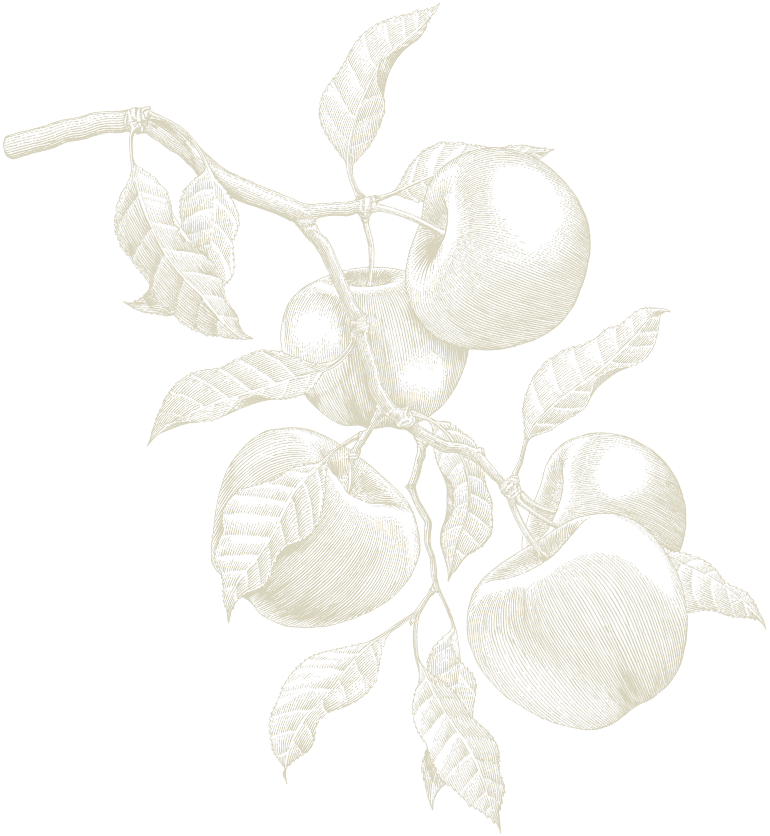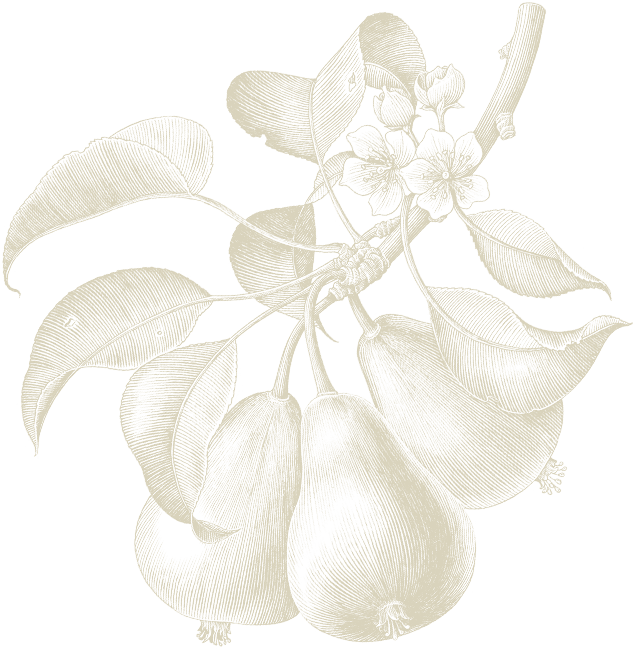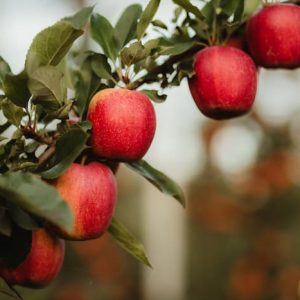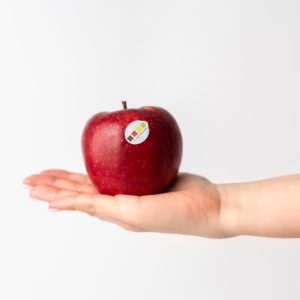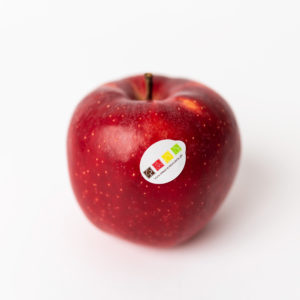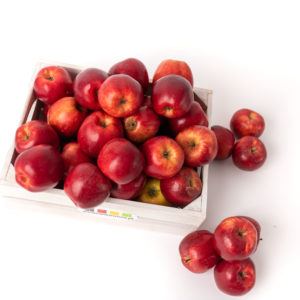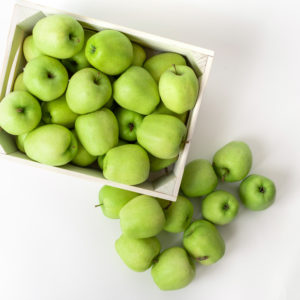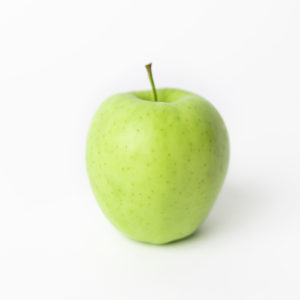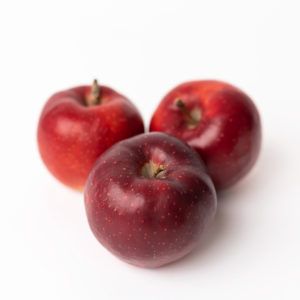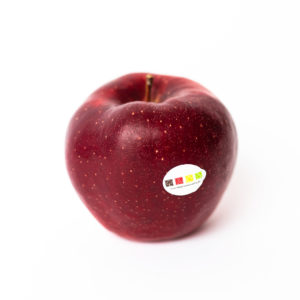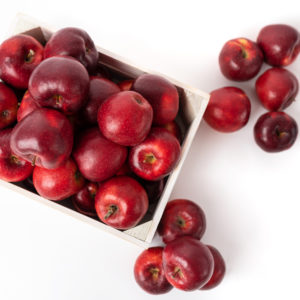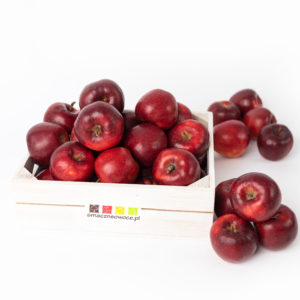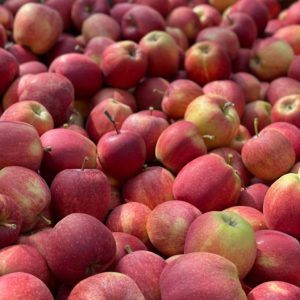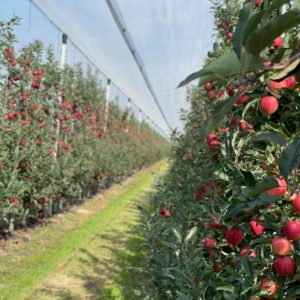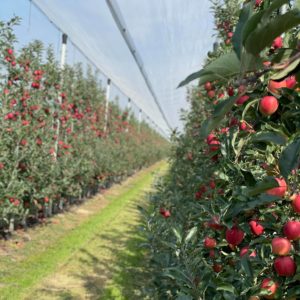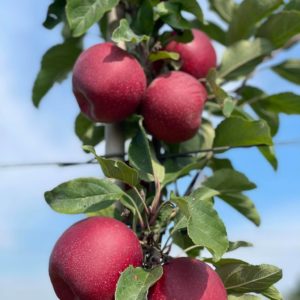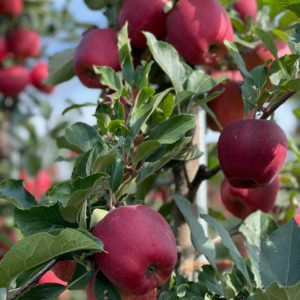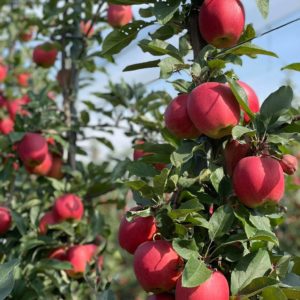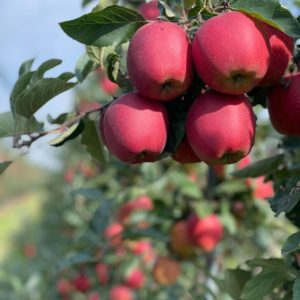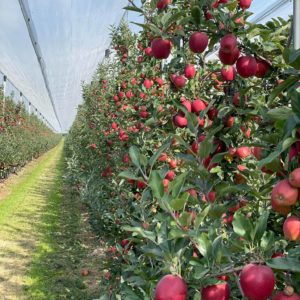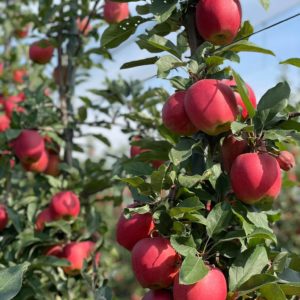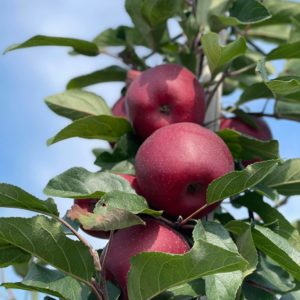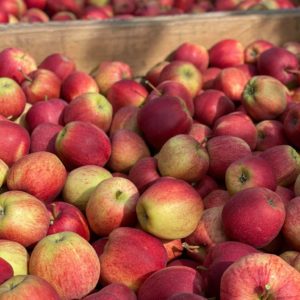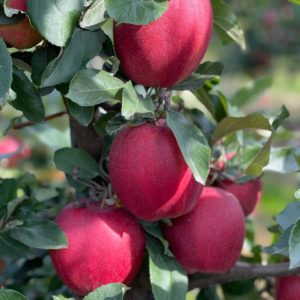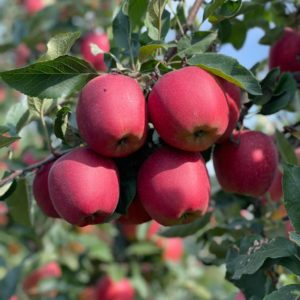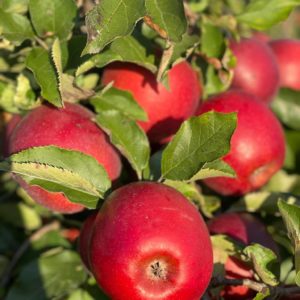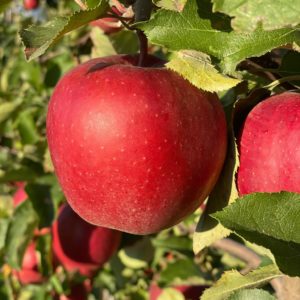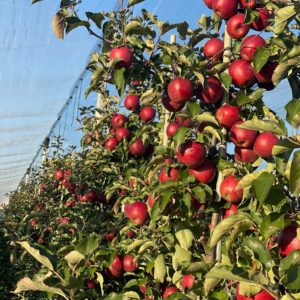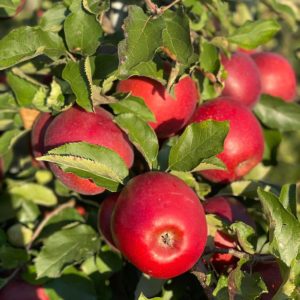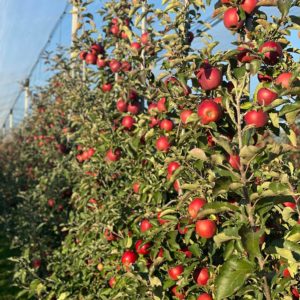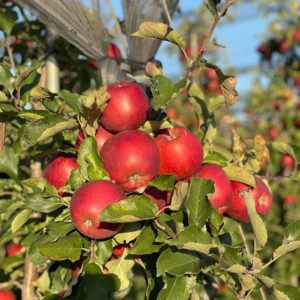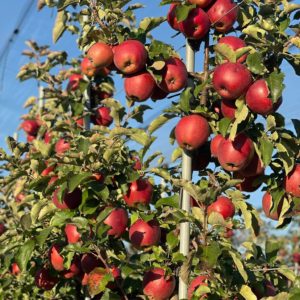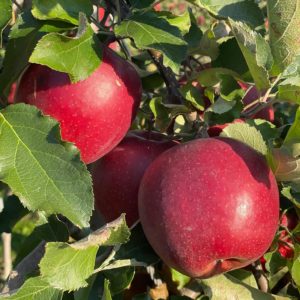History and Modern Cultivation of Apple Trees
Tradition, Innovation and Highest Quality
The apple tree has accompanied humankind since ancient times. In antiquity, the apple was a symbol of discord – according to Greek mythology it became the subject of a dispute between Aphrodite and Hera. In the Judeo-Christian tradition, this fruit is associated with the temptation that Eve is said to have offered Adam. The apple has also contributed to important scientific discoveries – it inspired Newton’s theory of gravity and served as an illustration of the scale of the atom.
The apple tree belongs to the rose family (Rosaceae) and is commonly found in the temperate climate zone. Around 25 wild apple species are known worldwide. A tree or shrub bearing pomaceous fruit is commonly referred to simply as an apple tree.
Domestic Apple Tree – Crossbreeding and Selection over the Centuries
The domestic apple (Malus domestica Borkh.) is a cultivated species that has been crossed and improved over centuries in order to achieve optimal production and eating characteristics. As an anthropophyte it has been domesticated in cultivation and is now one of the most important fruit crops in the world.
Thanks to a wide range of varieties, apples are appreciated by both growers and consumers, who choose them according to their individual visual and taste preferences. The multitude of varieties means that apples appeal to a broad audience – from lovers of sweet and juicy fruit to those who prefer more tangy and firm varieties.
Modern apple production focuses mainly on high-value commercial varieties that offer high productivity and an attractive appearance. The final choice of variety lies with the consumer, who decides which best suits their taste.
.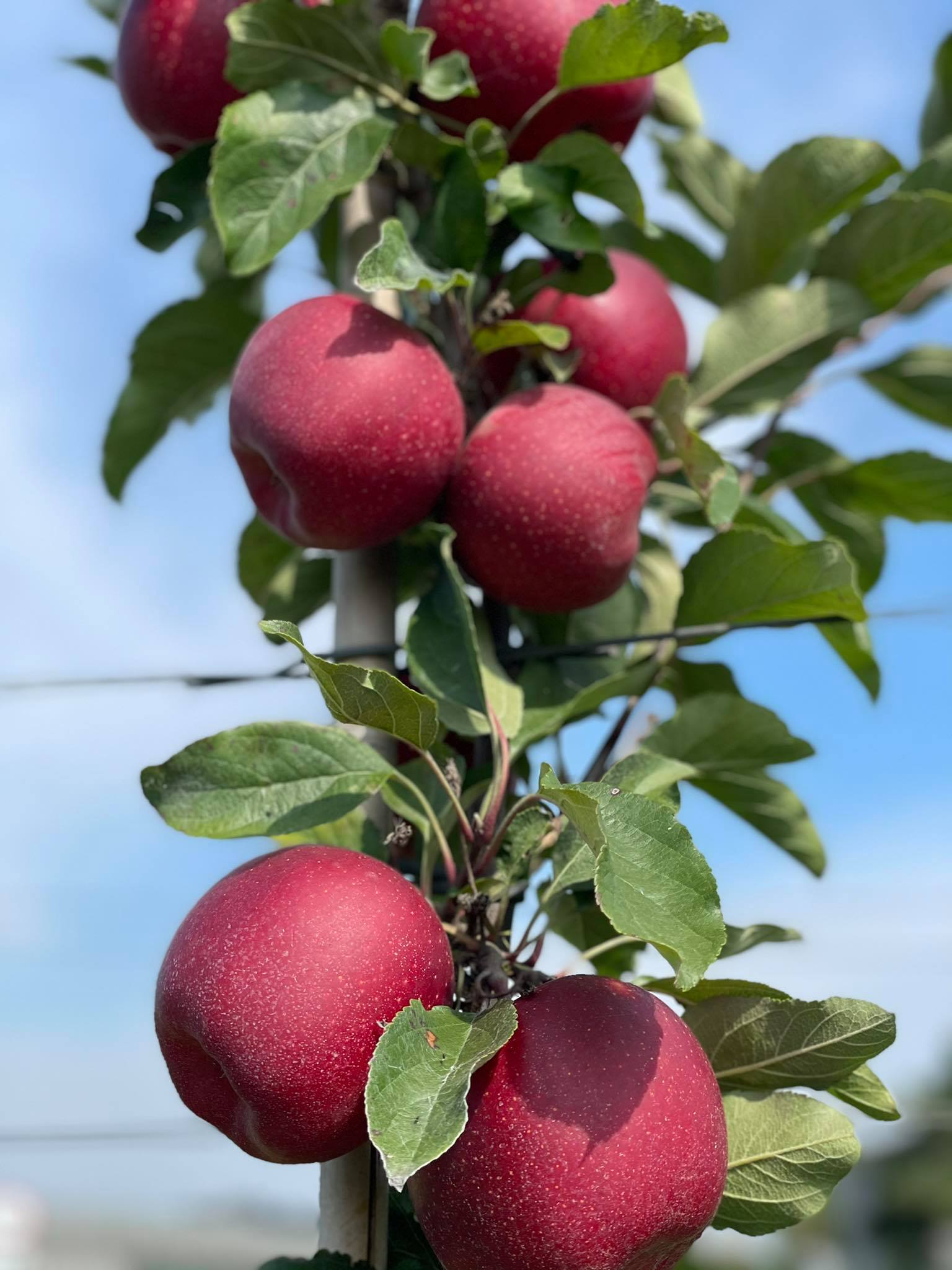
GALA
Popular and well-loved
Variety: ‘Gala’
Origin: ‘Kidd’s Orange Red’ × ‘Golden Delicious’
Breeding place: Greytown, New Zealand
Registration status of the variety: original
Year of registration in the Variety Register: 12.06.1992
A dessert variety which, despite its relatively small fruit size, has gained a very wide fan base all over the world. The fruit has a pronounced flavour and is especially popular (particularly with children). Gala readily produces new sports, which is reflected in the visual appearance of the fruit, mainly in the intensity of its colouring and skin texture. This variety accounts for around 44% of total production on our farm.
Morphological description:
-
the tree has medium vigour and forms a broadly conical, moderately dense crown;
-
the fruit is medium-sized to large, conical or round-conical, regular in shape, clearly ribbed around the calyx;
-
the skin is smooth and glossy, greenish-yellow, covered with an orange-red, striped and mottled blush;
-
the flesh is firm, crisp, juicy, fine-grained and sweet, with a delicate aroma reminiscent of Cox’s Orange and Red Delicious.
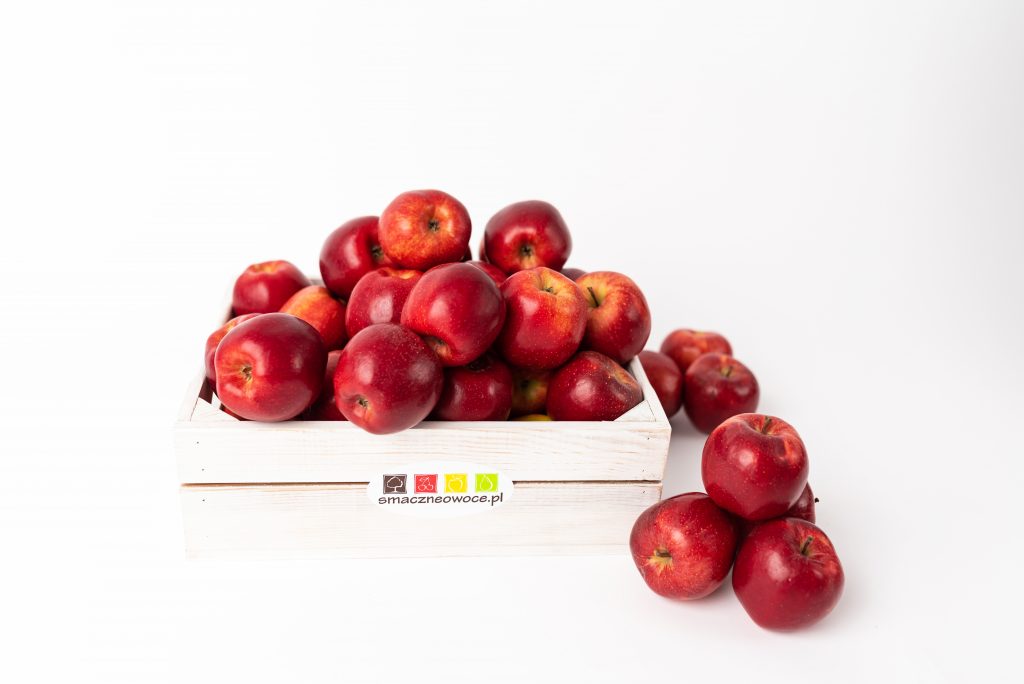
Red Jonaprince
Well-known, appreciated and frequently chosen
Variety: ‘Red Jonaprince’ (syn. ‘Wilton’s Red Jonaprince’, ‘Wiltons’)
Origin: mutant of the variety ‘Jonagold’
Breeding place: Belgium
Registration status: original
Year of registration: 24.01.2003 (protection until 31.12.2023)
A dessert, triploid, large-fruited variety. In cold storage with controlled atmosphere the fruit can be stored for a long time. A well-known and highly regarded member of the Jonagold group, it is eagerly chosen by consumers. It is one of the most common varieties on retail shelves, especially on the European market. With its pronounced flavour and exceptional crunchiness, it has conquered the consumer market both in Poland and throughout Europe. At present, fruit of this variety accounts for around 43% of our total production.
Morphological description:
-
the tree is vigorous, forming a broadly conical, moderately dense crown with drooping branches;
-
the fruit is large to very large, round-conical, slightly ribbed around the calyx;
-
the skin is of medium thickness, smooth, slightly greasy to the touch, greenish-yellow or creamy-yellow, without russeting, covered with a diffuse dark red to carmine blush; the lenticels are greyish, few;
-
the stalk is long; the stalk cavity is wide and deep, sometimes intensely green, occasionally with slight russeting;
-
the calyx is closed; the calyx cavity is fairly wide and deep, slightly ribbed;
-
the flesh is creamy, juicy, moderately firm, aromatic and sweet-tart;
-
picking maturity is reached at the end of September or the beginning of October; eating maturity from November.

Golden Delicious Reinders
Aromatic and tasty dessert variety
Variety: ‘Golden Delicious Reinders’
Origin: mutant of the variety ‘Golden Delicious’
Breeding place: Helden, the Netherlands
Registration status: original
Year of registration: 17.02.2005
A winter dessert variety, very well known both to traders and consumers. It is one of the leading varieties offered in many retail chains both in Poland and abroad. With its distinctive flavour and aroma it has earned the recognition of many consumers worldwide. The fruit of this variety is popular both for fresh consumption and processing. On our farm this variety has been grown for over 20 years and currently accounts for around 5% of our total production.
Morphological description:
-
the tree is characterised by strong growth in the first years after planting; the crown is slightly upright, spherical and moderately dense;
-
the fruit is medium-sized, round-conical, slightly ribbed mainly in the calyx area;
-
the skin is dry, slightly glossy; at harvest it is greenish-yellow, turning golden yellow as the fruit ripens; occasionally a very delicate, salmon-coloured blush appears on the fruit;
-
the flesh is creamy-yellow, firm, juicy, slightly sweet, aromatic and very tasty;
-
the fruit reaches picking maturity in mid-October and, under appropriate storage conditions for this variety, can be stored in cold rooms until April.
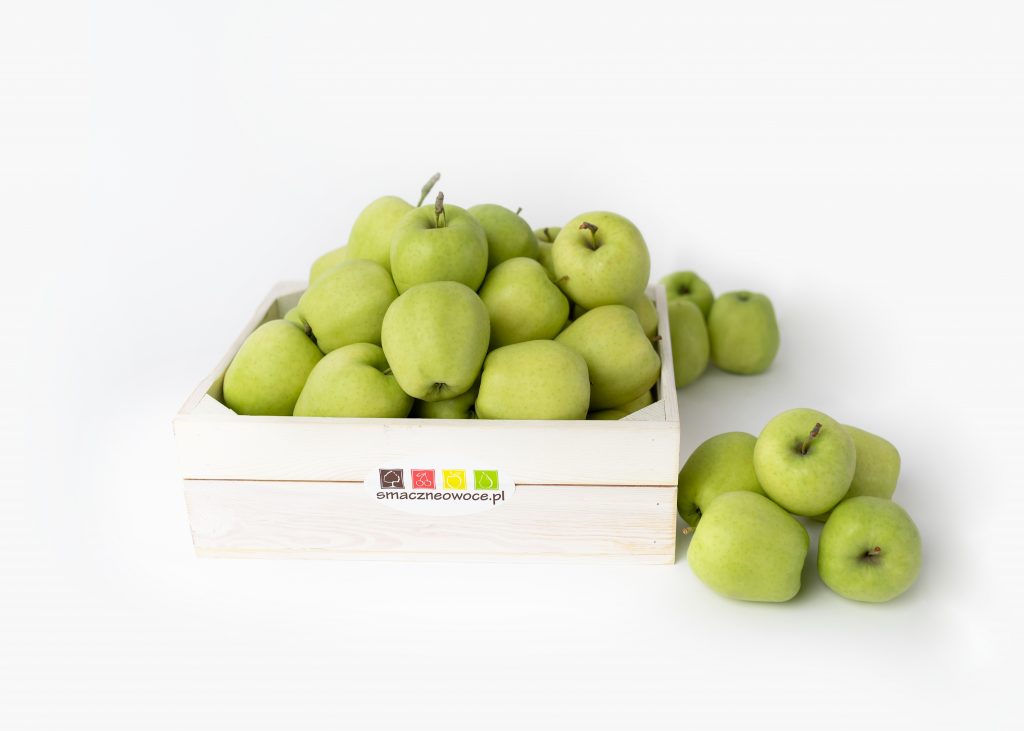
Jonagold PAGACZ
A noble variety among apples
GOLD MEDAL AT WORLDFOOD POLAND 2025
in the Food and Drinks category.
Variety: ‘Jonagold Pagacz’
Origin: mutant of the variety ‘Jonagold’
Breeding place: Biała Rządowa, Poland, G. Pagacz
Registration status: original, protected
A dessert, triploid variety with a flavour close to the Jonagold group, most similar to Red Jonaprince. A clear advantage of this variety is the very even and intense skin colouring, which makes it a strong competitor to other Jonagold types. Its visual appeal means that it is chosen more readily by consumers. It has excellent storage qualities and outstanding eating properties, in terms of sugar–acid balance, firmness and flesh texture. At present this variety accounts for around 8% of our total production and its share is steadily increasing. We are the sole owners of the variety and all licensing rights in Poland, as well as the only producer.
Morphological description:
-
the tree is vigorous and forms a broadly conical crown;
-
the fruit is large to very large, round-conical;
-
the skin is of medium thickness, smooth, slightly greasy, greenish-yellow or yellow, sometimes with slight russeting in the stalk cavity; over most of the surface it is covered with a dark, purplish-red, solid blush, which sets it apart from other Jonagolds in terms of the intensity of skin colour;
-
the flesh is creamy or yellowish, juicy, firm, aromatic and sweet-tart;
-
picking maturity is reached in the last ten days of September or at the beginning of October; eating maturity from November.





